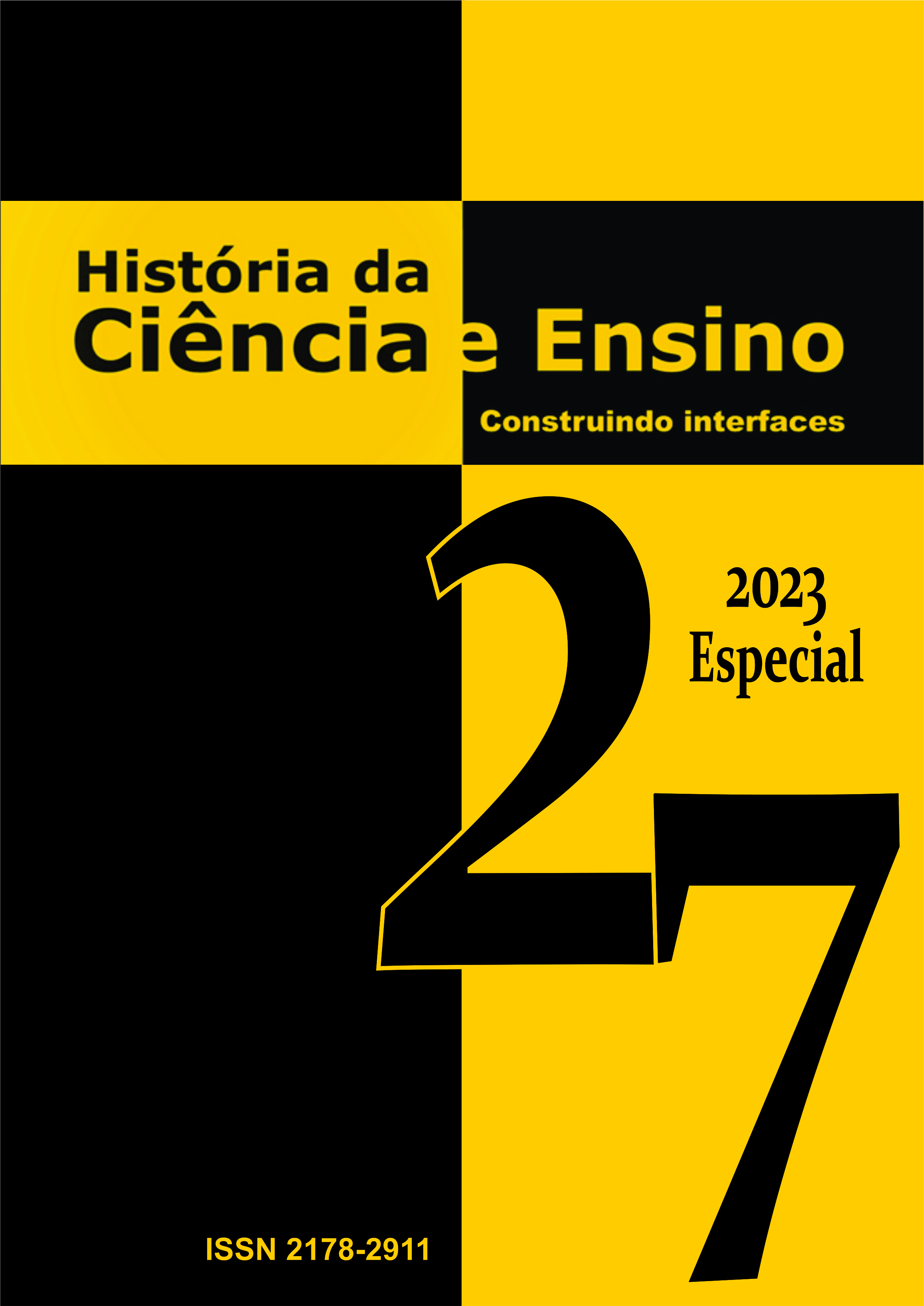Experimentação Animal: apontamentos acerca da crueldade na História da Ciência
DOI:
https://doi.org/10.23925/2178-2911.2023v27espp433-450Resumo
Resumo
O progresso científico permitiu uma melhoria indiscutível na qualidade de vida humana e de outros animais. Todavia, este sucesso é frequentemente apresentado sem menção dos custos a ele associados. Tendo como referência o período da ciência moderna, iniciado e consolidado nos séculos XVI e XVII, o aumento de grande parte do conhecimento científico fez-se com recurso à experimentação em humanos e animais. Num claro exemplo de permeabilidade da ciência aos valores hierárquicos vigentes na sociedade, escravos e prisioneiros foram utilizados em experiências diversas, assim como os mais pobres e vulneráveis (por exemplo, pessoas com doenças mentais). Igualmente comum foi a prática de testagem em pacientes antes de estar garantida a segurança das substâncias inoculadas. A prática de vivissecção e dissecação de animais era também generalizada, sendo usados com frequência cães, ratos, coelhos, gatos, cavalos e veados, generalizando-se o uso de primatas no século XX. Cientistas como o português Amato Lusitano (1511-1568), o inglês William Harvey (1578-1657), os franceses Claude Bernard (1813-1878), Louis Pasteur (1822-1895) ou o alemão Paul Ehrlich (1854-1915) são apenas alguns exemplos do uso da experimentação animal nas suas descobertas. Mas, se mobilizar princípios éticos fundamentais dos dias de hoje em práticas ocorridas no passado parece não fazer sentido, importa evidenciar que as práticas cientificas descritas foram um dos fatores que conduziram ao surgimento de percursores dos direitos humanos e dos animais e à criação no século XIX de associações como a Royal Society for the Prevention of Cruelty to Animals (RSPCA) e da Société Protectrice des Animaux (SPA) que iniciaram a luta organizada contra a crueldade sobre os animais. Estes e outros movimentos conduziram à situação atual em que o uso de animais em investigação científica continua a ser um tema controverso, e em que os princípios da substituição, redução e refinamento têm vindo a ser adotados.
Neste texto pretende-se apresentar ocontributos de alguns cientistas para a história da experimentação animal nos últimos 5 séculos. Recorre-se à análise documental de algumas obras de autores de referência, a saber: Bory (2013), Newton (2013) e Guerreni (2022), embora outros autores sejam igualmente mobilizados.
Palavras-chave: Experimentação Animal, Vivissecção, Ética, Bem-estar animal
Abstract
Scientific progress has allowed an indisputable improvement in the quality of life for humans and other animals. However, this success is often presented without mentioning the costs associated with it. Taking the period of modern science as reference, which began and consolidated in the 16th and 17th centuries, the increase of part of scientific knowledge was achieved through experimentation on humans and animals. In a clear example of the permeability of science to the hierarchical values prevailing in society, slaves and prisoners were used in different experiments, as well as the poorest and most vulnerable (for example, people with mental illnesses). Equally common was the practice of testing patients before the safety of the inoculated substances was guaranteed. The practice of vivisection and dissection on animals was also generalized, being dogs, rats, rabbits, cats, horses and deer frequently used, and primates generalized only in the 20th century. Scientists such as the Portuguese Amato Lusitano (1511-1568), the English William Harvey (1578-1657), the French Claude Bernard (1813-1878) and Louis Pasteur (1822-1895) or the German Paul Ehrlich (1854-1915) are just a few examples of the use of animal experimentation in their discoveries. But, if mobilizing fundamental ethical principles of today in practices that occurred in the past does not seem to make sense, it is important to highlight that the scientific practices described were one of the factors that led to the emergence of precursors of human and animal rights and to the creation in the 19th century of associations such as the Royal Society for the Prevention of Cruelty to Animals (RSPCA) and the Société Protectrice des Animaux (SPA) which initiated the organized fight against cruelty to animals. These and other movements have led to the current situation in which the use of animals in scientific research continues to be a controversial topic, and in which the principles of substitution, reduction and refinement have been adopted.
This text aims to present the contributions of some scientists to the history of animal experimentation in the last 5 centuries. Documentary analysis of some works by reference authors, namely: Bory (2013), Newton (2013) and Guerreni (2022) was privileged, although other texts are also referenced.
Keywords: Animal Experiments, Vivisection, Ethics, Animal Welfare


